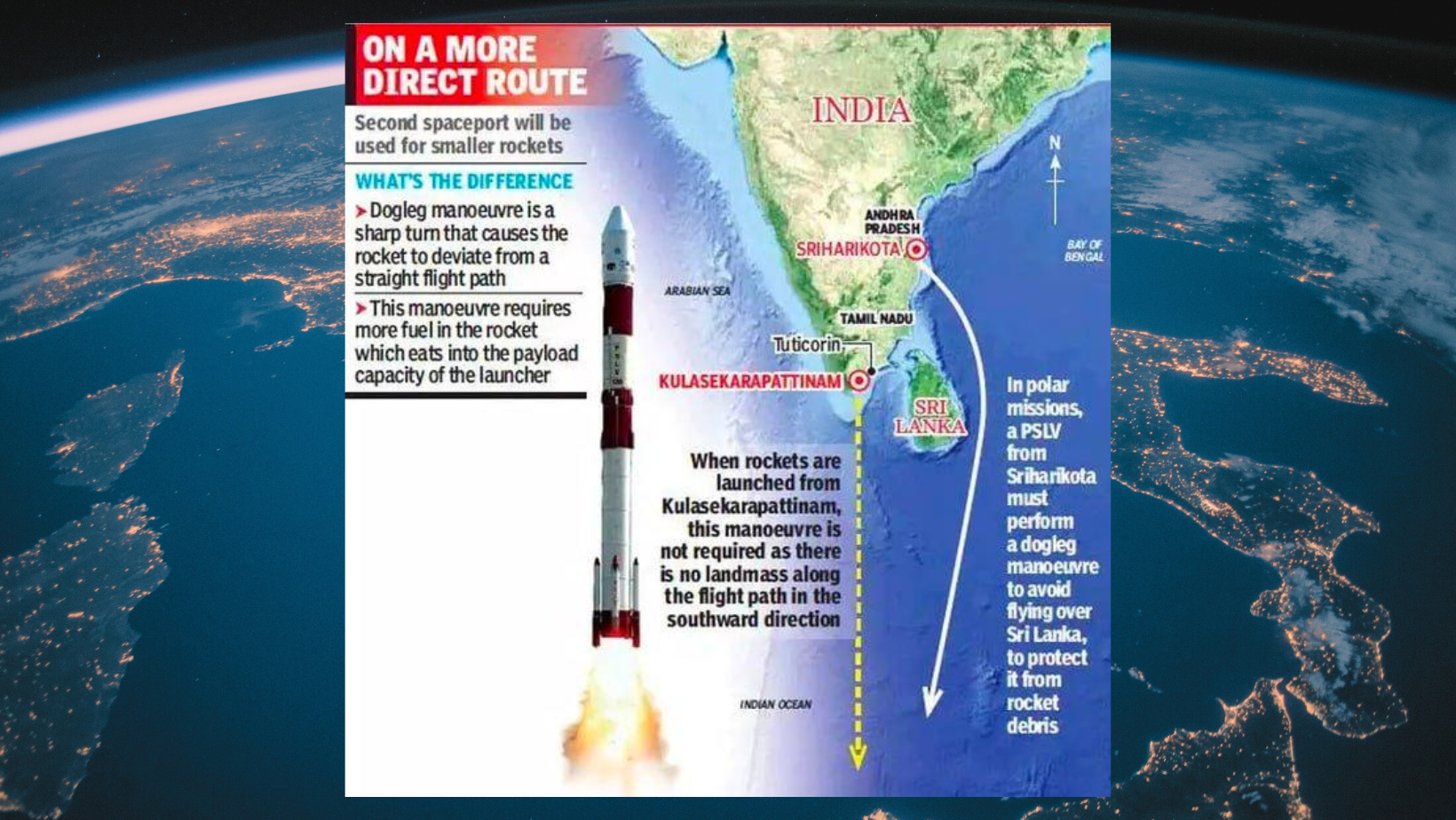PM Modi lays stone for India’s second spaceport at Kulasekarapattinam

- 29 Feb 2024
Why is it in the News?
Prime Minister Narendra Modi laid the foundation stone for the country’s second spaceport at Kulasekarapattinam in Tuticorin district recently.
About Kulasekarapattinam Spaceport:
- The Kulasekarapattinam Spaceport is a forthcoming space launch facility located in Kulasekarapattinam, a coastal village near the temple town of Tiruchendur in Thoothukudi district, southern Tamil Nadu.
- It will become the second operational spaceport in India after the Satish Dhawan Space Centre, established in Sriharikota, Andhra Pradesh, in 1971, and will feature two launch pads.
- The primary focus of the Kulasekarapattinam Spaceport will be to facilitate the commercial launch of Small Satellite Launch Vehicles (SSLVs).
- Spanning 2,350 acres, the spaceport will comprise 35 essential facilities, including a launch pad, rocket integration facilities, ground range and checkout facilities, and a mobile launch structure (MLS) equipped with checkout computers.
- With the capability to launch up to 24 satellites annually using a mobile launch structure, it offers a strategic advantage by enabling direct southward launches over the Indian Ocean, thus conserving fuel for small rocket launches.
- This stands in contrast to the Satish Dhawan Space Centre, where launching into a polar orbit necessitates additional fuel due to the curved trajectory required to avoid crossing landmasses, particularly Sri Lanka.
- The estimated cost of the Kulasekarapattinam Spaceport project is Rs. 986 crore.
About the Small Satellite Launch Vehicles (SSLVs):
- The SSLV, or Small Satellite Launch Vehicle, is a three-stage launch vehicle characterized by three solid propulsion stages and a liquid propulsion-based Velocity Trimming Module (VTM) serving as a terminal stage.
- Measuring 2 meters in diameter and 34 meters in length, the SSLV boasts a lift-off weight of 120 tonnes.
- Designed for versatility, the SSLV can effectively launch a 500kg satellite into a 500 km planar orbit.
- Notable features of the SSLV include its cost-effectiveness, rapid turnaround time, ability to accommodate multiple satellites, feasibility for launch-on-demand, and minimal infrastructure requirements.
